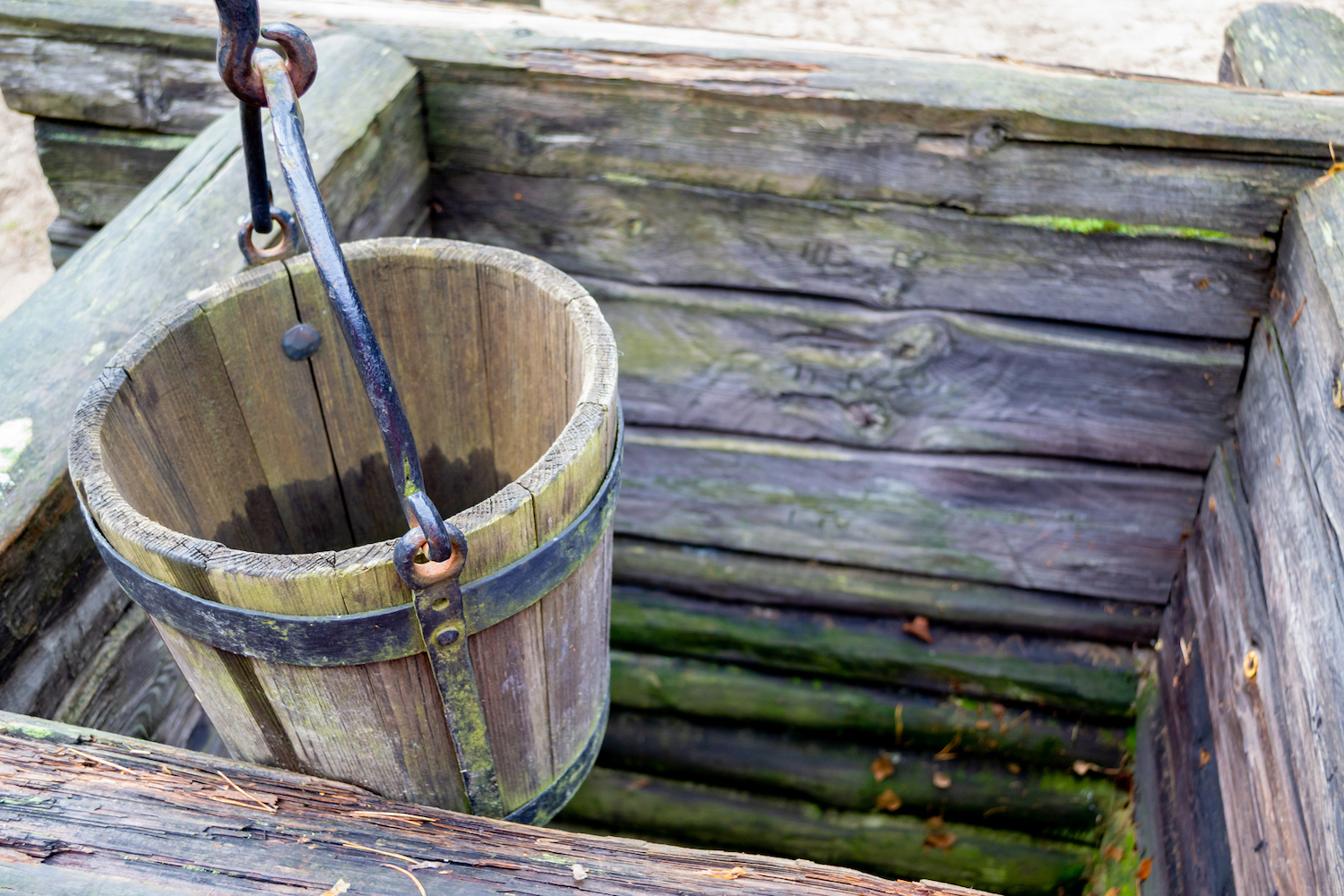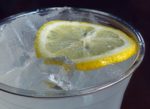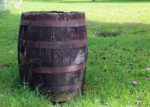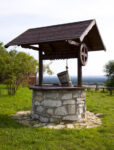
Obtaining Pure Water to Drink
In the 1800s, depending on where a family lived, water might come from a pipe (in cities) or from a well, cistern, creek, lake, or river. Water was often contaminated and people had to know how to make it drinkable.
INFORMATION BELOW FROM 1800s COOKBOOKS
WATER AS A BEVERAGE
Most foods contain water. The water present in foods, however, is not sufficient for the needs of the body. It is necessary to use water as a beverage.
When one rises in the morning, it is well to drink one or two glassfuls of water. From one to two quarts of water, either as plain water or in beverages, should be taken each day. It used to be thought that water drinking during a meal was harmful. Scientific investigations have shown that this is a mistaken idea. Indeed it has been found that it aids in the digestive processes, provided foods are not “rinsed down” with it and provided very cold water is not used.
FOREIGN MATERIALS IN WATER
Since water is such a ready solvent, it contains many foreign materials. In passing through the air and in flowing through the ground, it dissolves many substances. Some of these substances are harmless, while some contain disease bacteria and are dangerous. Water from wells is frequently contaminated. It is often not safe to use for it drinking purposes unless boiled.
BEST WATER SOURCES
The best water for cooking and other purposes is rain-water but is seldom used, especially in large cities, where it is difficult to procure it. Another difficulty is, when procured, it soon gets foul. The next best is river-water or water from lakes.
PURE WATER
To test water, draw a tumbler full at night, put a lump of sugar into it, and leave the glass in a warm room. If the water next morning is clear, then it is quite pure. But if it should appear cloudy or milky, it is unfit for drinking.
CAUTIONS ON WATER
- Water boiled in galvanized iron becomes poisonous, and cold water passed through zinc-lined iron pipes should never be used for cooking or drinking.
- Never use water which has stood in a lead pipe over night. Run not less than a wooden bucketful before using.
- Never use water from a stone reservoir for cooking purposes.
- Hot water for cooking should never be taken from hot water pipes. Keep a supply heated in kettles.
- Pulverized alum possesses the property of purifying water. A large spoonful stirred into a hogshead* of water will so purify it, that in a few hours the dirt will all sink to the bottom, and it will be as fresh and clear as spring water. Four gallons may be purified by a teaspoon of alum.
- To purify water, put a small lump of lime into your water-cask. Agitating and exposing it to the air will help to keep it fresh.
- Cistern* water may be purified by charcoal put in a bag and hung in the water.
- If water is muddy, strain water through a sieve in which a cloth or sponge, (or a layer of fine sand or charcoal) has been placed.
- To prevent water tasting of smoke when boiled on the fire, allow a small piece of wood similar to a matchstick to float on top of the water.
- By boiling hard water, it may be brought nearly to the state of soft water.
- If your well-water is very hard, it is always an advantage to use a little pearlash* in cooking.
- A piece of chalk put into spring water will soften it.
- When foul water has to be used, and no filter, charcoal, alum, sand, or paper can be had to filter it, it will improve by boiling it and then exposing it to the air for some time.
*cistern – a large waterproof tank that holds water. They’re often built to catch rain-water.
*hogshead – a large wooden cask often used to hold alcoholic beverages in Colonial times. In the U.S., a hogshead was equal to 63 gallons (238 liters).
*pearlash – the white powder that remains when potash is baked in a kiln.
HEATING WATER
When bubbling occurs below the surface, water is simmering. When the surface is in motion and steam is rising, the water is boiling. By boiling, water evaporates its gases and alkali. The loss of gases makes boiled water taste flat or insipid. Therefore, use the water at the first boiling. If this is not possible, this flatness can be overcome somewhat by aerating the water after boiling, i.e. by pouring it from one vessel into another and thus mixing air with it.
Image from Deposit Photos
=================================================
Do You Worry About the Quality of Your Drinking Water?
Please Leave a Comment Below.
=================================================Sawyer Products SP128 MINI Water Filtration System
Ideal for outdoor recreation, hiking, camping, scouting, domestic and international travel and emergency preparedness.
Fits in the palm of your hand; weighs just 2 ounces; 0.1 Micron absolute hollow fiber membrane inline filter.
Attaches to included drinking pouch, standard disposable water bottles, hydration packs, or use the straw to drink directly from your water source.
Removes 99.99999% of all bacteria, such as salmonella, cholera, and E.coli; removes 99.9999% of all protozoa, such as giardia and cryptosporidium.
=================================================
High Capacity Direct Connect Under Sink Water Filtration System
Removes Chlorine, Lead, Chromium 6, Heavy Metals, Bad Tastes, Odors And Contaminants
This filter should be used in conjunction with municipally treated drinking water or water that has been properly disinfected prior use.
LASTS FOR A MINIMUM OF 3 YEARS OR 10,000 GALLONS – Notes: For longest life, use with municipal treated cold water only, not well water. Do not use with salty or softened water. Connects for use only with cold water for drinking.
=================================================






2 thoughts on “Obtaining Pure Water to Drink”
These may certainly become things that people should know. Our drinking water is not as pure as we think it is. God forbid any kind of catastrophe that would make water (clean water) unattainable.
I agree. I use a filtered water pitcher because I feel our city water has too many chemicals in it.